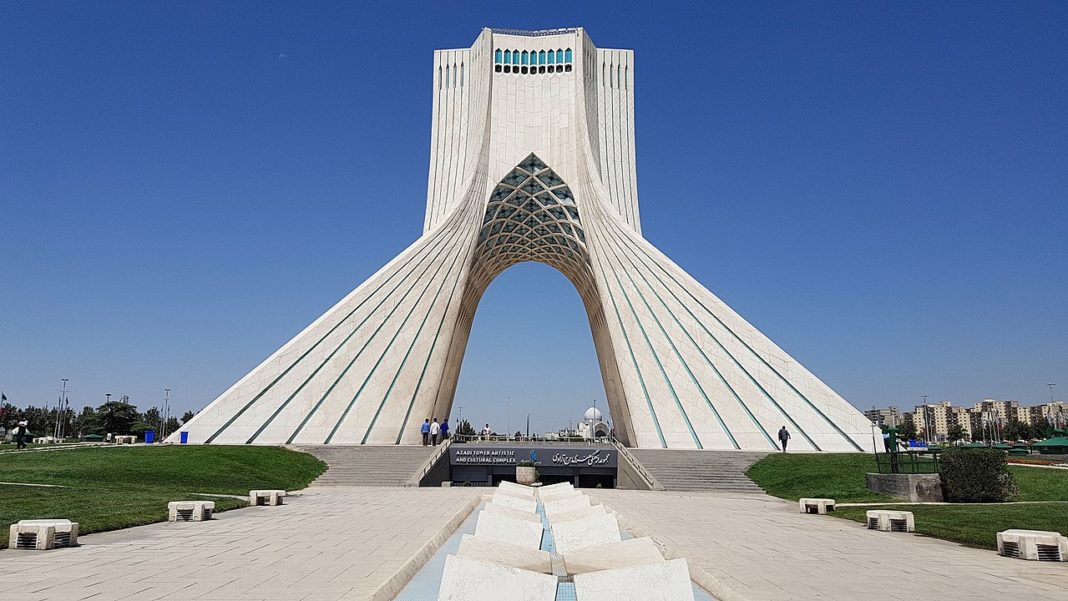The tower is about 45 meters tall and is completely clad in cut marble. It was commissioned by Mohammad Reza Pahlavi, the last Shah of Iran, to mark the 2,500-year celebration of the Persian Empire and was completed in 1971.
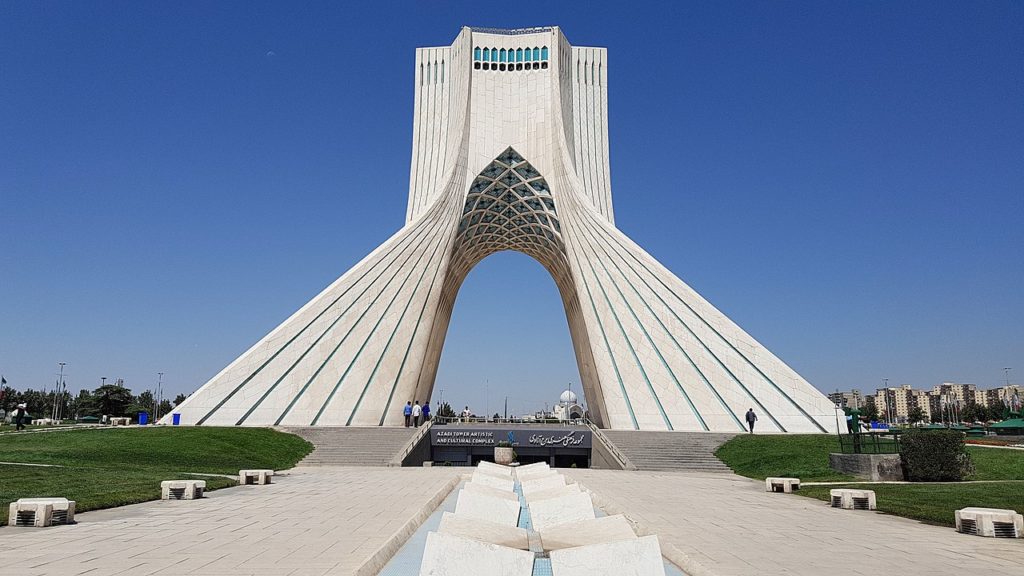
During the 1960s, Iran became a major oil-exporting country, and using the newly-found wealth, the Shah launched programs to modernize and industrialize the country. After winning a competition, architect Hossein Amanat was tasked to design the tower. His ideas were based upon classical and post-classical Iranian architecture, popular influences on art in the 1960s following the White Revolution. Iran’s increasing wealth sparked modernization programs and sent the art industry into a renaissance-like period.
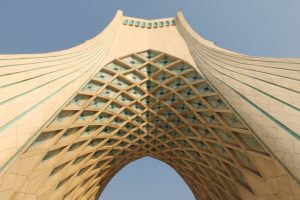
Built with white marble from Isfahan Province, the monument includes 8,000 blocks of stone. The stones were all located and supplied by Ghanbar Rahimi, who was well known for his extensive knowledge of quarries, often known as the Soltān-e Sang-e Irān (“Iran’s Sultan of Stone”). Computers were used to “define its complex woven surfaces,” which, at the time, was a new technological technique.
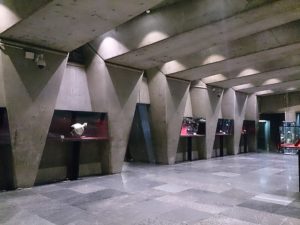
The Azadi Museum is located at the basement level. Inside are austere black walls of dignified proportions. A concrete mesh forms the ceiling. Heavy doors open onto a crypt with subdued lighting from showcases, each containing an object. The museum houses a number of gold and enamel pieces, painted pottery, marble and paintings. Approximately fifty pieces have been selected, each representing a particular period in Iran’s history.
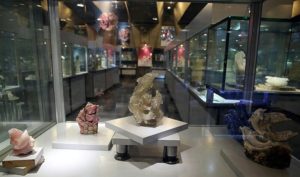
Among the earliest items on display are square flagstones, gold sheeting, and terracotta tablets from Susa covered with cuneiform characters. Before the 1979 Revolution, the main display was occupied by a copy of the Cyrus Cylinder, the original being kept at the British Museum. A translation of the cylinder’s cuneiform inscription is inscribed in golden letters on the wall of one of the galleries leading to the museum’s audio-visual center. A similar plaque facing the cylinder listed the Twelve Points of the White Revolution. Next, to the Cyrus Cylinder, there was a gold plaque commemorating the original presentation of the museum to Mohammad Reza Pahlavi by the Mayor of Tehran. Potteries, ceramics, varnished porcelains (such as a seventh-century blue and gold dish from Gorgan), an illuminated Quran, and miniatures highlighted milestones in the country’s history up to the 19th century, which was represented by two painted panels from Empress and the structure was to represent Farah Pahlavi as in is stated in some ancient texts.
According to Wikipedia





